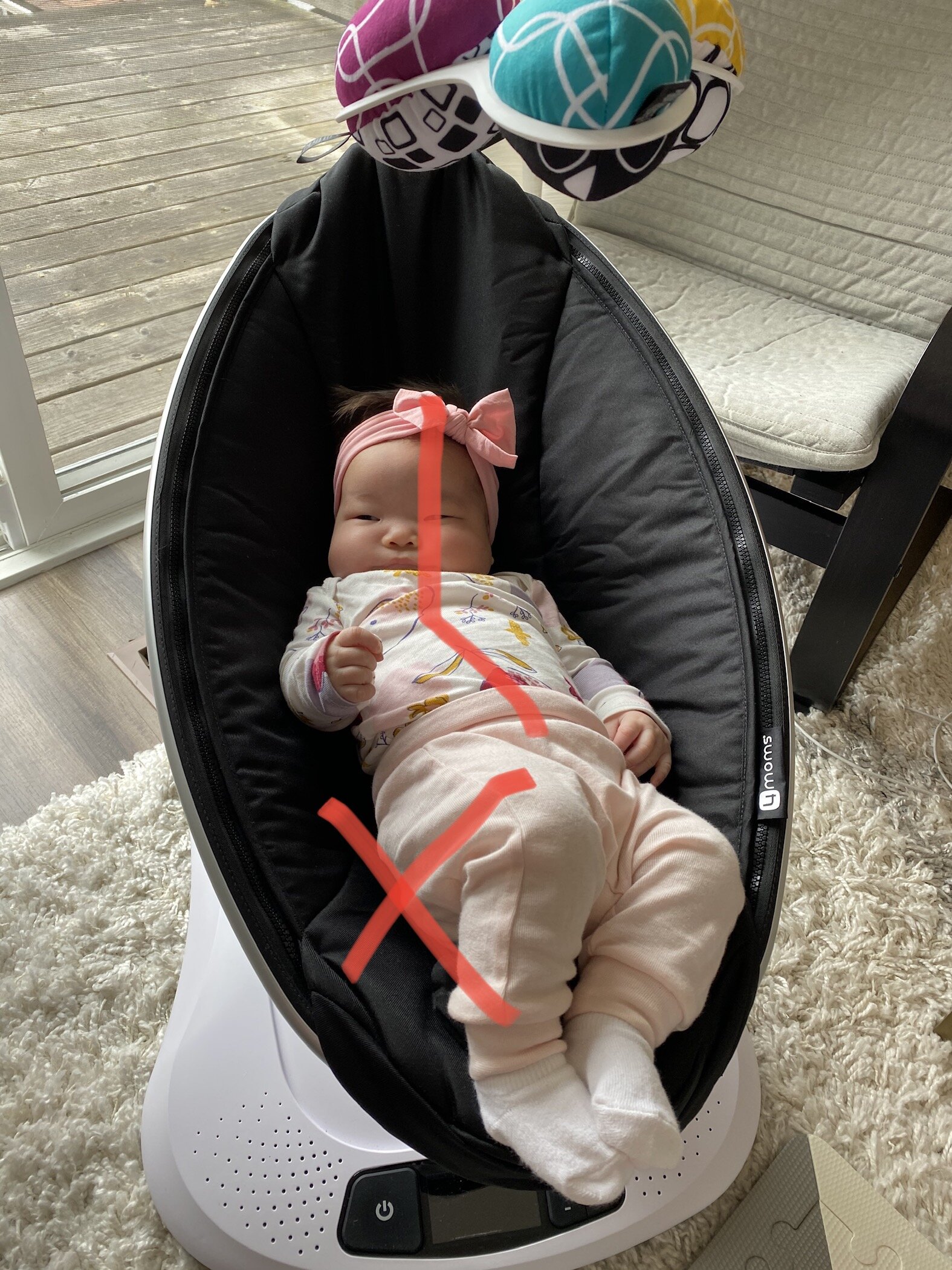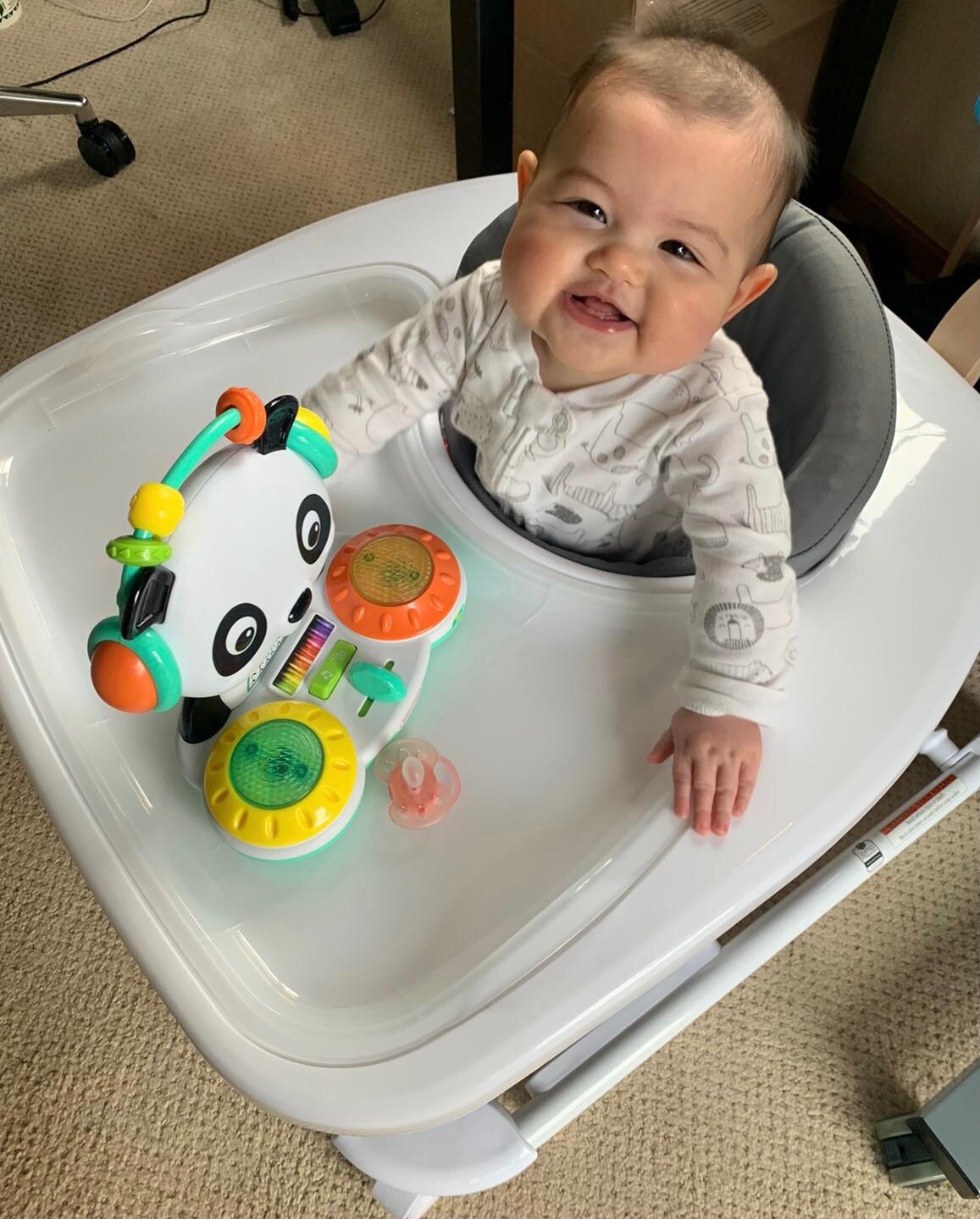Walkers, Jumpers, Swings…Oh My!
Questions about equipment are some of the most frequent ones I get from parents. “What equipment should I use?” “Is it ok to put my baby in [insert product here]”? And the answer is loaded. My usual response is everyone’s least favorite answer: IT DEPENDS!
It depends on what your goal is for the piece of equipment. It depends on what your baby’s needs are. It depends on how your baby will use it. I’m going to break down general equipment use for babies in a few different ways to help you make the best decisions about equipment for you and your baby! But first of all…
Why does equipment matter?
Glad you asked. The implications are important to ensure safe joint/postural alignment and encourage appropriate developmental and play opportunities. We also want to avoid excessive pressures on these precious growing bodies!
I also want to be clear that the equipment I am talking about today is the over-the-counter, found-at-Target type—the kind you might get at a baby shower, such as a Mamaroo, an ExerSaucer, a Bumbo, etc. I will talk more about medical equipment, like upright standers and pediatric walkers/gait trainers, in future posts!
This little sweetie is chillin’ in her Bumbo seat!
What is your goal for using the equipment?
Why are you using the equipment? Is it to keep baby safe and supported while you do the dishes, take a much-deserved shower, or clean the living room? GO FOR IT. These needs are real, and baby positioners can certainly be necessary for these reasons. When used in moderation and under supervision, they can come in handy to keep active babies safe while you do real adult things!
As is often the case in life, all things in moderation! Spending too much time in positioners can lead to a condition called Container Baby Syndrome, which occurs when babies spend too much time in “containers” that inhibit movement. Research shows that most babies spend up to 6 hours a day in these devices—that’s way too much!
A good general guideline is to use positioners for less than 30 minutes a day, and DOUBLE the amount of floor time baby gets that day! Since equipment restricts motion, floor time is crucial for helping babies explore free movement, get to know their bodies, and helps encourage sensorimotor development.
Is your goal to help your baby work on developmental milestones? Most of the time these skills (such as sitting, rolling, crawling, standing and walking) are best addressed right on your living room floor, with a thoughtfully designed environment to set baby up for success. Equipment is most likely not the best choice for this goal.
What are your baby’s needs?
Each baby will have different needs based on their age, strength, limitations, and/or special medical considerations. Individualized positioning is something I work on a lot with babies and their families, and is outside the scope of this blog post. Contact your favorite pediatric PT to get some one-on-one help if needed!
In general, it is important to encourage neutral, midline alignment. This means you should be able to draw a line from baby’s forehead to their belly button, making sure their neck and body are fairly straight. If baby is too rotated or slumped to one side, or is unable to hold their head/body upright in a stander/walker, they are most likely not well supported and this will not be good on their joints and postures.
As always, safety first! Use the equipment as it was intended, and always strap baby in snugly to keep them safe. A common cause of injury with babies involves improper use of equipment, so buckle up!
LEFT: Bad example—baby has poor alignment and posture and is not strapped in!
RIGHT: Good example—baby is neutral and midline and is safely strapped in!
How are you using it?
It’s important to choose baby equipment that best fits your baby’s developmental needs and motor timeline. For example, if your baby is still young or working on head control, they should use equipment that supports their head and neck, like an infant swing or reclined seat with head support. If your baby is older and has stable head control, they might be ready to use a stander or walker.
As with many aspects of infant care, it’s important to meet your baby wherever they are! If your baby is working on sitting skills, use equipment that supports sitting (like a swing or Bumbo-type seat). If a baby is working on standing up tall, choose devices that supports stable standing (like an ExerSaucer or standing play gym). If baby is starting to explore taking steps, they may be ready to graduate to a baby push walker.
This growing gal is learning to cruise around in her baby walker!
I’m just going to say it (and you may not like it), but I DO NOT recommend baby jumpers (such as Jumperoos). Jumping is a complex skill that takes years to develop. Usually toddlers don’t start jumping until they are around 2-3 years old, and there is A LOT that goes into developing that ability. By this time, these movers and shakers have many months under their belt of standing, walking, falling and climbing. These experiences help their muscles get stronger and their movement patterns and coordination mature. Their bodies and joints have had a chance to develop further, and are ready to take on the challenge of learning to jump. Placing a young baby or a baby who isn’t developmentally ready for this complex, repetitive movement into a jumper can place unhealthy stress on their vulnerable bodies and joints.
There is a lot more to dive into about specific types of equipment you are using for your baby. I plan to do baby "case studies” breaking down different types of popular baby equipment in upcoming blog posts, so stay tuned!
TL;DR
Choosing baby equipment is a complex process with many factors to consider, including what your goal is for the equipment, what your baby needs, and how you use it.
This is important because babies’ bodies are vulnerable and developing, so we need to be thoughtful about the postures, positions and pressures they are experiencing. Too much time in devices can lead to Container Baby Syndrome.
A good guideline is to limit time in baby equipment to 30 minutes a day, and double the amount of floor time they get! Floor time is important for all aspects of development.
Choose equipment that is appropriate for the skills your baby is working on, and make sure they are well supported with neutral, midline alignment. Jumpers are generally not recommended, for several reasons.
Always use equipment the way they were designed, safely, and under supervision to avoid injury.
There are different considerations based on the type of equipment and each baby’s needs. Case studies to come to further break this down!





